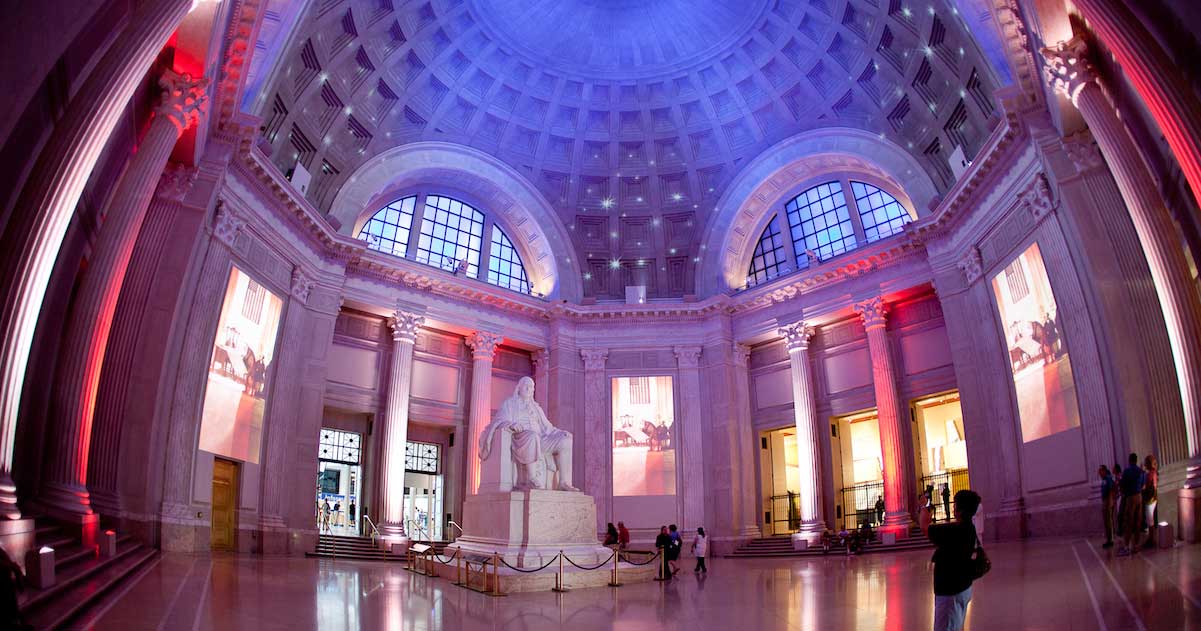Mirroring new focal points for meeting planners, several CVBs have modified their promotional efforts. CVB marketing is now more about experiential offerings, personalization, fostering engagement and an increasing reliance on user-generated content.
It’s paid off: CVB marketing updates have led to more calls and more eyeballs to websites and social media feeds. Most importantly, they are booking more business.
Last year, it was time for a new Philadelphia CVB program to showcase the City of Brotherly Love’s modern offerings, alongside its more traditional attractions.
The CVB wanted to leverage the destination’s momentum after hosting the Democratic National Convention in 2016 and the National Football League draft in 2017, which was followed in early 2018 by the Philadelphia Eagles’ first Super Bowl victory.
“This was the new Philadelphia, not the destination you visited 10 years ago on your class trip,” says Julie Coker Graham, president and CEO of the CVB. “There was much more to do now, so we wanted a new way to frame traditional assets and change the perceptions of meeting planners and attendees.”
Experiential Moments
The CVB created “Frankly Philadelphia,” a “bold, fresh campaign that allows us to celebrate traditional offerings and speaks to our experiential side,” she says.
For that, sample itineraries meant to showcase the city’s “depth and distinction” were added to the website. Categories include “fashionable,” “family-friendly,” “unexpected Philadelphia” and “by-the-book Philadelphia.”
That experiential emphasis is in keeping with meeting trends, says Coker Graham, who serves as co-chair of Meetings Mean Business, the industry coalition promoting the value of face-to-face events.
“Many conventions are using more pods or fireside chats so attendees can dig deeper and engage with like-minded peers,” she notes. “We wanted to make sure we kept up with experiential demand.”
Additionally, an edgy “Frankly Philadelphia” video showcases various attractions and parts of the city, and even includes text in a mix of modern and old-time styles. Print and digital ads were also created.
As a result, says Coker Graham, “At year end 2018, we had 621 events on the books for future years, with an estimated 3.2 million future attendees, up 14 percent over 2017. Those visitors are projected to consume about 3.8 million room nights, up six percent over 2017.”
The Philly CVB wasn’t the only destination marketing organization looking to change perceptions of its well-known city. Destination D.C., the CVB for Washington, DC, was looking to promote offerings of the nation’s capital beyond the federal government. On Jan. 1, it launched “Discover the Real DC,” an advertising campaign centered around experiences unique to the District.
It featured print, online and broadcast advertisements focused on various categories, including arts, family fun, trendy spots, African-American history, LGBTQ-friendly, food, politics and sports.
“It’s all about authentic experiences you can have here and showcasing how the destination is much more than the federal government,” says Robin McClain, senior vice president, marketing and communications for Destination DC.
Destination DC did have one challenge in launching its program in January: The federal government was in the midst of its longest shutdown in history. So Destination DC created “DC is Open,” a platform telling “potential visitors that while some of DC’s greatest museums were closed, there was a plethora of other opportunities awaiting them,” McClain says. That campaign remains active, allowing the bureau another method of promoting assets off the beaten path.
Since the launch of “Discover the Real DC,” the bureau has recorded 462,284 definite room nights and 434 leads. Also, at press time, according to a spokeswoman, Destination DC clocked in at 182 percent over its domestic earned media coverage goal for the 2019 fiscal year. Additionally, she noted that organic social media engagement has ticked up year-over-year by 14 percent, while total unique visitors to the bureau’s site, washington.org, were up by 18 percent as of September.
Also, this year Destination DC added three business sectors to its “Connected Capital” sales initiative, which promotes industries that are well represented in the District in order to entice meeting planners. The newest fields are sustainability, transportation and government advocacy. As a result of the program, Destination DC’s convention sales and services team to date has recorded 462,284 definite room nights and 434 leads, according to the bureau.
Inspiration and Accessible Information
Still another CVB, Arkansas Tourism, is driving visitation by making its site more engaging, user-friendly and “likely to inspire travel.”
“Before, the site had many more listings, but we streamlined information and now we describe places with more color and details that set the scene and make you envision being there,” says Leah DiPietro, communications manager.
Adds Kristine Puckett, deputy tourism director, “When we identified goals for the new site, one of our main priorities was to have content that focused more on inspiration. To achieve that, we incorporated image-based navigation, video on the homepage, direct integration with user-generated content from social media and more long-format copy through the launch of Discover Arkansas,” a monthly digital publication with a different theme for each issue.
The CVB made these changes to keep up with trends, Puckett says.
“We use image-based navigation, instead of large sections of text, because users are more engaged with imagery and headlines than body copy,” she says. “Including user-generated content allows us to show potential visitors our state from what many consider to be more authentic viewpoints, captured by amateur photographers on their mobile devices.”
Arkansas Tourism also streamlined its group travel page to connect meeting and convention planners directly to the websites of CVBs representing cities within the state. The move makes the relaying of information to planners much more efficient, Puckett says.
“Our previous website directed all inquiries into our state sales office, where our staff were responsible for initiating follow-up and distributing the resulting leads to appropriate industry partners,” she says. “The new site shortens the response time by delivering meeting planner inquiries directly to the CVB representative in the city of their choosing.”
As a result of these changes, she notes, “We are seeing an increase in the quality of site visitors. More of them are showing intent to travel, meaning they are visiting a partner website, engaging in a partner’s social media channels, getting directions, etc. These increased conversions stem from improved navigation and the reduced [number] of clicks needed to access trip planning information.”
Meanwhile, the DuPage CVB in DuPage County, Ill.—which has 38 communities—focused on highlighting more of its destination and making its website more user-friendly.
The bureau debuted a new video called “DuMore DuPage” in July and followed that up with a website refresh in August.
The video showcases everything from the destination’s proximity to area airports to its low tax rate, according to Miriam Blumenthal, director of marketing and bureau partnerships. The enhanced website includes user generated content—allowing prospective visitors to “see our urban sophistication and old-world charm”—and enables web surfers to build a customized itinerary.
“Our website was very antiquated and needed an update,” she says. “Now it’s more intuitive and user-friendly.”
All of the material showcases the host of green space available in the destination, which has a wellness focus.
“User-generated content is what’s trending now, and it organically shows people the lifestyle here,” Blumenthal says. “Residents and meeting planners are saying, ‘Wow, we didn’t know we had all of this here!’ They’re having aha moments.”
Photo: Benjamin Franklin Memorial at The Franklin Institute by Paul Loftland for the Philadelphia CVB.







